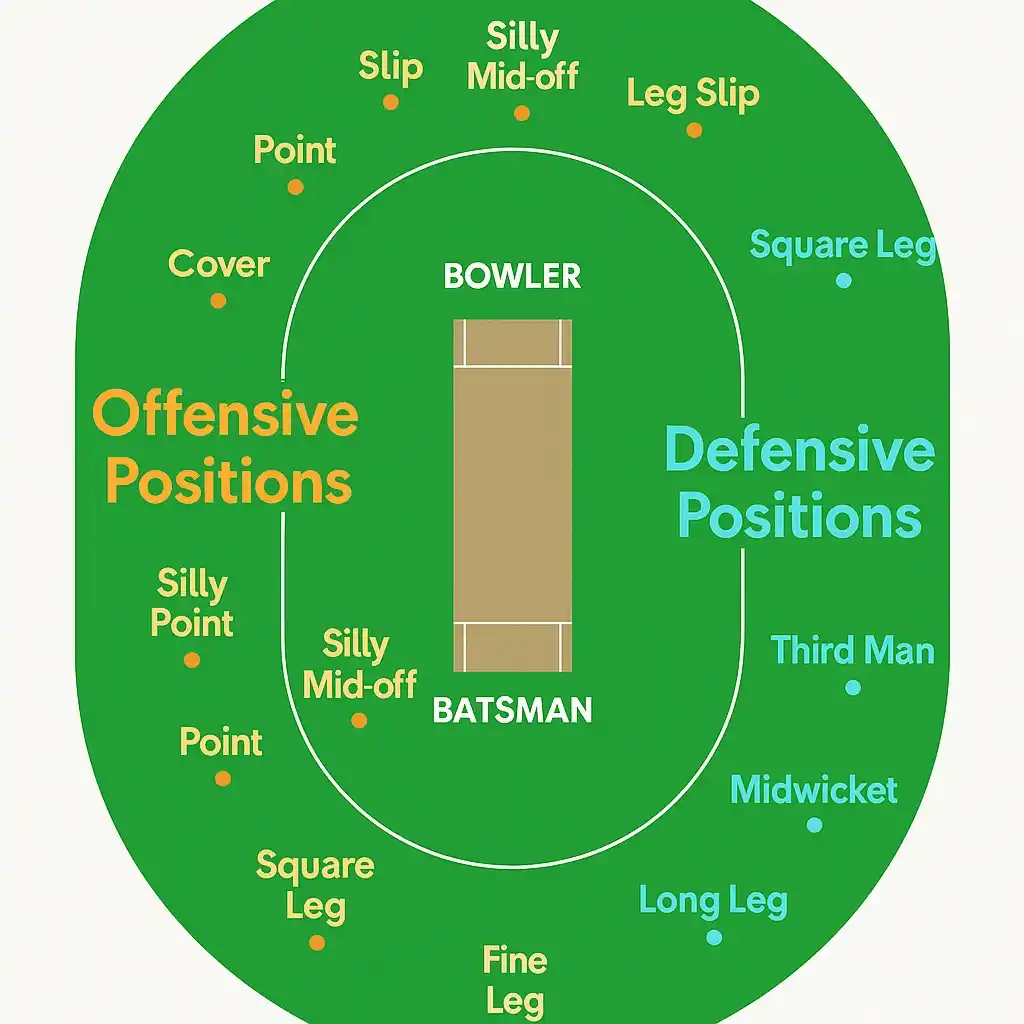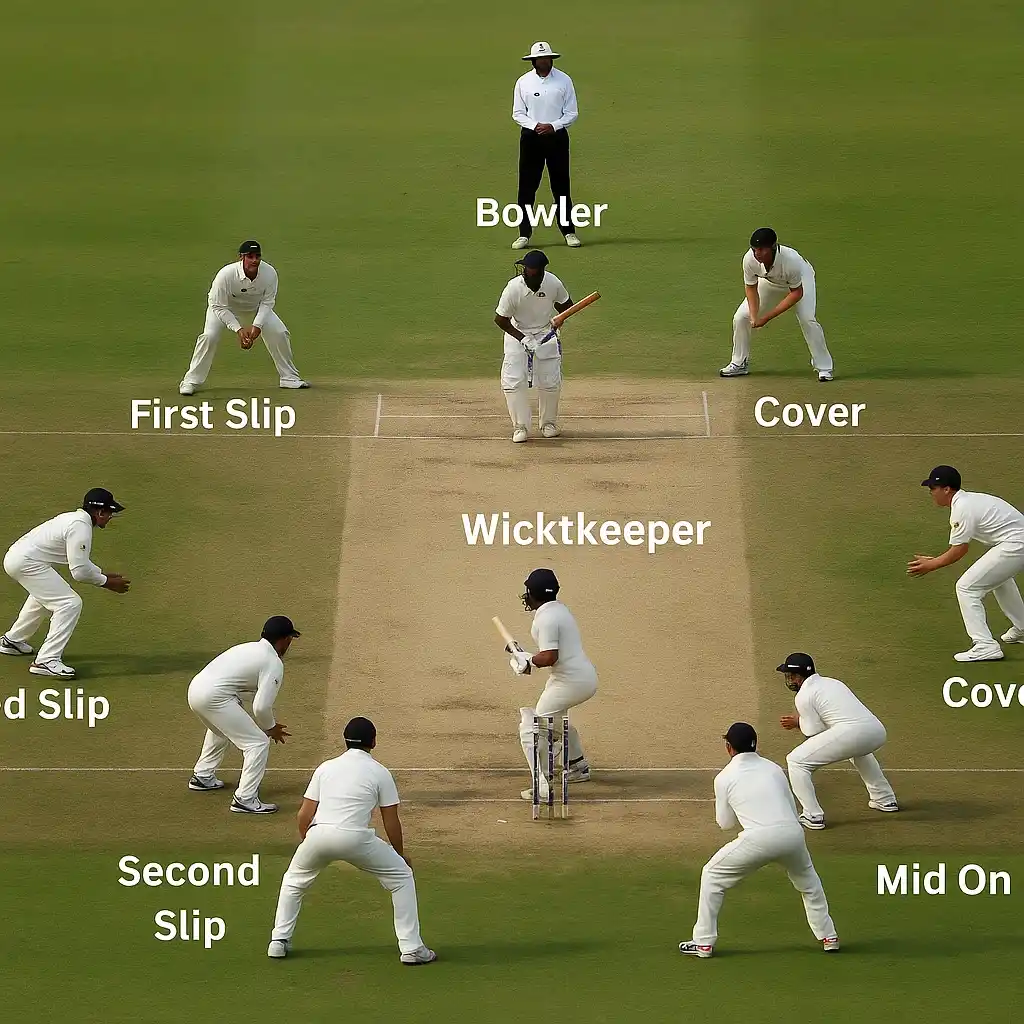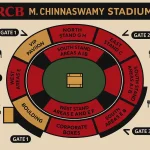
Listening serves as a cue to search for something. The batter prepares himself, the bowler approaches, and a deep cover fielder is already moving even before the shot is executed. Understanding the game distinguishes sharp teams from the rest. Fielding goes beyond definitions from textbooks. It embodies the concepts, the strategies of fielding, and the decisions that translate cricket into positions alive on the field.
Catching and diving is but a small part of fielding. Mind-reading and placement also figure prominently. If you want to take a serious interest in cricket, knowing the different functioning parts of the field and how positions work with one another is crucial.
The Basic Map Isn’t That Basic
Most newcomers think cricket fielding positions are a fixed diagram. They’re not. They’re living, adapting with every bowler, every batter, every phase of play. But sure, there is a framework — the core structure teams start with before tinkering.
Here’s a table that breaks down the fundamental fielding positions and what they’re generally responsible for:
| Position Name | Area on Field | Usual Role |
| Slip | Behind batter | Catching edges off fast bowlers |
| Gully | Wide of slips | Intercepts thick edges |
| Point | Square off-side | Cutting off square cuts, tight singles |
| Cover | Off-side, deeper | Intercepts drives, builds pressure |
| Mid-off | Straight off-side | Prevents straight drives, can attack stumps |
| Mid-on | Straight leg-side | Similar to mid-off, helps seamers/spinners |
| Midwicket | Angled leg-side | Stops flicks, fields aggressively |
| Square leg | Square leg-side | Covers flicks and pulls |
| Fine leg | Deep behind | Long chases, sweep cover |
| Third man | Behind off-side | Protects edges, last line for cuts |
This grid, though, is just the skeleton. Watch how a captain moves players depending on whether it’s a powerplay, a left-right combo at the crease, or a bowler who spins it square. That’s where the art kicks in.
From Theory to Strategy
Take Virat Kohli at cover. Or Ravindra Jadeja at backward point. Their positions aren’t just labels. They’re zones of control. You don’t take a quick single to Jadeja unless you’re suicidal. And if the opposition knows Kohli’s in the ring, they avoid risk on that side. A fielding position, then, becomes a psychological marker as much as a tactical one.
That’s especially true in the subcontinent, where slow pitches make you earn every run. You’ll often see an extra catcher under the helmet for a spinner, crouched at silly point, waiting for the batter to mistime a flick. Or a leg slip sneaking in when a wrist-spinner comes on. These aren’t random calls. They’re crafted.

Specialized, Situational, and Occasionally Unorthodox
As T20s grew and fielding became tighter, positions like deep backward square and long-on became hot zones. Batters sweep, ramp, reverse — captains answer with smarter angles.
| Modern Adjustment | Traditional Name | Tactical Purpose |
| Deep backward point | Point extension | Guards against upper cuts and ramps |
| Cow corner | Deep midwicket | Protects slog-sweeps, spin attack area |
| Fly slip | Between slip/gully | Targets miscued edges in white-ball cricket |
| Sweeper cover | Deep cover | Cuts boundaries off lofted drives |
Cow corner isn’t on any coaching manual from 1975. But say it in a T20 dugout and everyone nods. That’s how dynamic cricket fielding positions have become. Language, like the game, evolves.
Reading the Situation, Not Just the Score
A lot of amateurs mimic positions from TV without grasping why they’re used. Why does the captain push fine leg back in the death overs? Because yorkers sometimes drift into pads. Why does third man come up when a spinner bowls? Because edges go to slip, not behind square.
And sometimes, it’s not about the batter or bowler at all. It’s about who’s fielding. Hardik Pandya at long-off saves 10 extra runs compared to a slower fielder. Glenn Maxwell at backward point might cut off two more boundaries per game. So fielding positions are often about maximizing fielding ability, not just filling spots.
The Craft of the Captain
Watch MS Dhoni in his prime. He moved fielders with such purpose you could almost predict the next delivery. A leg slip slides in? Expect the spinner to float one onto leg stump. Short third up? Watch for the slower bouncer.
Great captains use fielding positions like cues. They reveal intent. They create doubt. They trap batters. You think you’re targeting a boundary? You’re walking into a plan. That’s why fielding position changes mid-over aren’t just tweaks — they’re mind games.
Why It Still Matters
The average fan doesn’t always track field placements. But they notice outcomes. Dot balls. Catches. Boundaries cut off. And those all trace back to one thing: cricket fielding positions, intelligently used.
If you really want to understand the heartbeat of a cricket match, don’t just follow the ball. Watch the field. Look at how it shifts after a boundary. Pay attention when a fielder swaps sides. There’s a story unfolding — not always told in replays or stats. But it’s there.
And once you see it? You’ll never watch the game the same way again.

Meet Arjun Kushaan, a passionate cricket analyst at The Cricket24x7. From street matches in his childhood to competitive college tournaments, cricket has always been a central part of Arjun’s life. With a strong background in data analysis and a natural affinity for numbers, he brings a fresh, analytical lens to the game. At The Cricket24x7, Arjun blends his deep love for cricket with his data-driven approach to deliver detailed insights and well-rounded coverage for fans of the sport.

